Star S1

Star S1

Introduction
Evolution of Density Profile
Zoomed in Evolution
Evolution of Density Profile with Velocity Field
Zoomed in Evolution with Velocity Field
Black Hole and Disk Parameters
Introduction
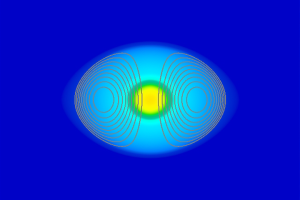
Fig. 1-1 Initial Shape of the Rotating Star
Evolution is performed on a variable grid, with the grid changing as the characteristic radius of the star changes. This is necessary since the characteristic radius of the star decreases by a factor of almost 103 during the collapse. The grid is initially 400x400 and uniform but ultimately increases to 1400x1400 as collapse proceeds. After collapse, a 600x600 multiple-transition fisheye grid is used. In this simulation, the spin parameter is J/M2 = 0.96, Req = 640, and Pmag/P = 2.7 x 10-4. Figure 1.1 shows the initial shape of the star.
Evolution of the Density Profile
In the meridional clip, the density is plotted on a logarithmic scale. The gravitational field is evolved via the BSSN scheme. The MHD equations are solved by a high-resolution shock capturing (HRSC) method.
At t/M=0, the star is rotating near the mass-shedding limit. Rotational to gravitational potential energy is T/|W|=0.009. The star quickly collapses to a black hole, creating an apparent horizon and surrounding torus. The frozen-in magnetic field grows initially by matter compression and winding. Soon after collapse, an outflow develops as matter from the outer layers of the star falls in. The outermost material has enough angular momentum that is it prevented from accreting and instead accumulate near the black hole, eventually heating up the inner torus and creating an outward shock along the surface of the torus. Unlike in the unmagnetized case (S0), the outflows in this case are persistent and not intermittent. The outflow carries the frozen magnetic field with it, causing the field lines near the outflow in the torus to bend, increasing the magnetic pressure in the region and strengthening the outflow. As the outflow proceeds, the field lines become collimated along the rotation axis of the black hole. A magnetic shock creates turbulence in the torus. This turbulence is sustained by MRI and leads to stochastic accretion onto the black hole at late times.
The collimated field lines and massive accretion torus make this star a viable candidate for launching ultrarelativistic jets as well as long-soft gamma-ray bursts.
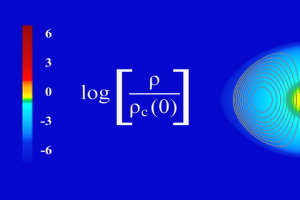 Fig. 2-1 Color code for density profile |
 Fig. 2-2 Density Profile at t = 0 |
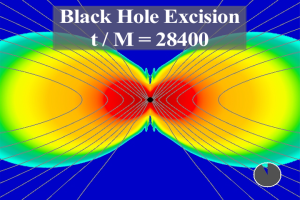 Fig. 2-3 Black hole excision at t/M = 28400 |
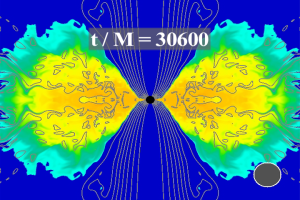 Fig. 2-4 Density Profile at t/M = 30600 |
Zoomed in Evolution
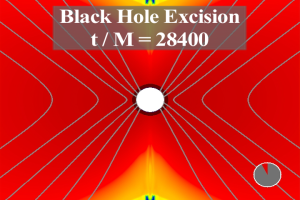 Fig. 3-1 Black hole excision at t/M = 28400 |
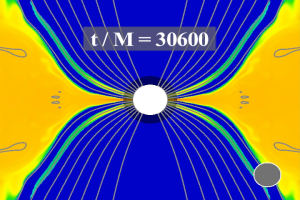 Fig. 3-2 Density profile at t/M = 30600 |
Evolution of Density Profile with Velocity Field
Zoomed in Evolution with Velocity Field
Black Hole and Disk Parameters
The star collapses to form a rotating black hole surrounded by a massive disk. Listed in the table below are significant, nondimensional parameters for the spin of the black hole and disk, and the rest mass of the black hole and disk. These parameters indicate the formation of a substantial disk.
Last Updated 5 Nov 14 by SEC

Fig. 4-1 Color code for density profile

Fig. 4-2 Density Profile at t = 0
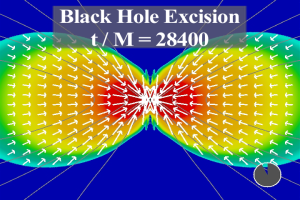
Fig. 4-3 Black hole excision at t/M = 28400
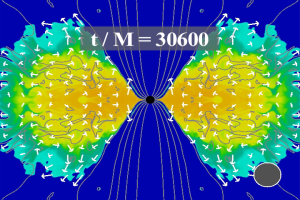
Fig. 4-4 Density Profile at t/M = 30600
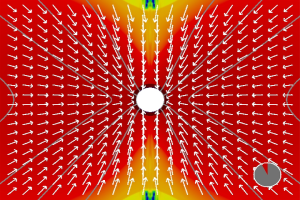
Fig. 5-1 Black hole excision at t/M = 28400
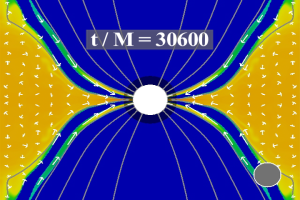
Fig. 5-2 Density profile at t/M = 30600
MBH/M 0.96 MD/M0 0.07 JBH/J 0.68 JBH/M2BH 0.71